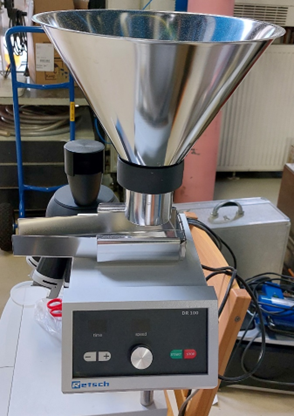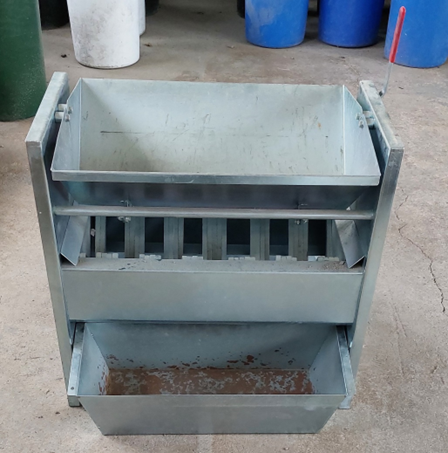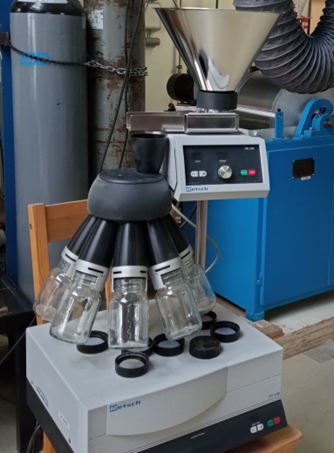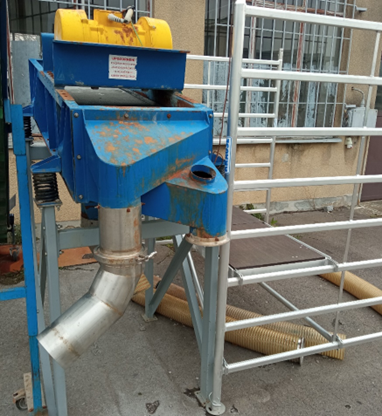Feeding and Granulometric classificators
Feeder and De-samplers
Feeder devices are used to achieve a controlled and stable feeding of materials. De-samplers are devices typically used to obtain representative samples of solid materials.
Single channel vibratory feeder fed by a conical hopper. The device can adjust the feed flow using the hopper´s opening and feed channel vibration. Depending on the material’s characteristics maximum feed flow of the device is approximately 100 kilograms per hour. The maximum particle size of the solid particles to be treated is up to a few millimeters.
Manual equipment for obtaining solid representative samples is specially designed for large-volume samples. It consists of an upper hopper into which the sample is introduced and a series of channels with opposite directions below the hopper. After the manual opening of the hopper, the material is separated equally into two products which are collected in two containers located on the sides of the equipment. The approximate volume of the upper hopper is 30 liters and the maximum particle size of the solid particles to be treated is up a few centimeters.
This is complementary equipment to the vibratory feeder designed to obtain representative samples of solid materials. It is an 8-channel rotary de-sampler which, to guarantee the representativeness of the samples, rotates constantly under the vibratory feeder. The maximum capacity of the equipment per sample is 4 liters, distributed in 8 samples of 250 ml. The maximum particle size of the solid particles to be treated is up to a few millimeters.
Screening and sieving devices
The semi-industrial equipment is specifically designed for particle size separation. It consists of a sturdy metallic frame with a fixed mesh. Through a vibratory movement generated by an eccentric motor, the material undergoes granulometric separation, either above or below the mesh size. The laboratory equipment available in the research group’s facilities offers a range of mesh sizes, varying from 0.5 mm to 100 mm. The output capacity of the equipment depends on the size and density of the material being processed, typically reaching 2 to 3 tons per hour. Furthermore, thanks to its design, the equipment allows for automatic collection of both granulometric by-products, which are deposited into containers or big bags.
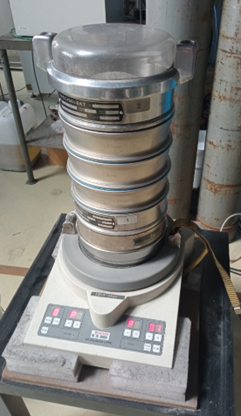 Sieving tower and air jet sieving shaker
Sieving tower and air jet sieving shaker
The equipment is specifically designed for sieving small samples and conducting granulometric analysis of solid samples. The sieving tower is capable of performing granulometric analysis in each test using samples of approximately 250 grams. It utilizes a column of 10 sieves with progressively smaller sieve spacing. The facility is equipped with over 30 sieves, ranging from 63 microns to several centimeters in mesh size, enabling a wide range of particle size analysis.
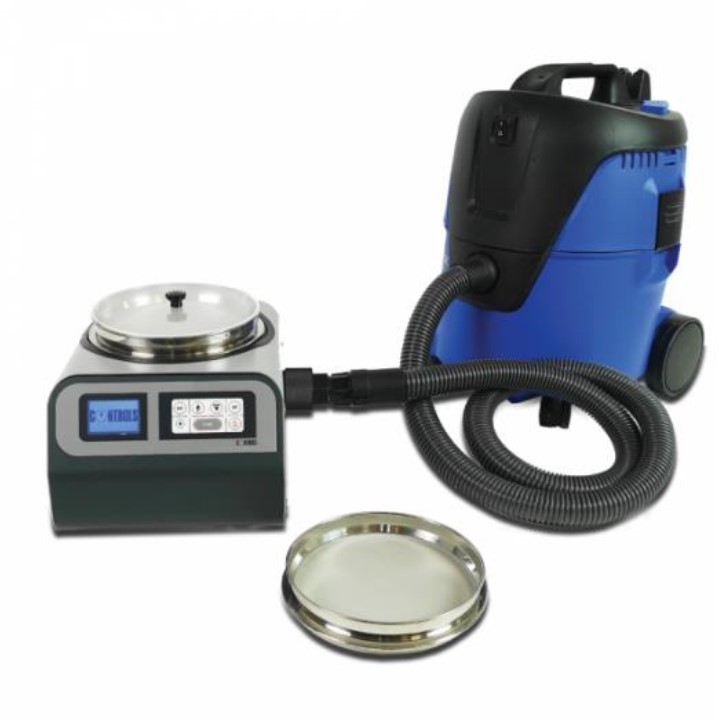 The air-jet sieving device, on the other hand, is designed for sieving and particle size analysis of ultrafine materials. It consists of an air suction pump and a rotating plastic plate that comes into contact with the bottom surface of the sieve. By creating a vacuum through suction and scraping with the plastic plate, this device can effectively sieve samples as fine as a few microns.
The air-jet sieving device, on the other hand, is designed for sieving and particle size analysis of ultrafine materials. It consists of an air suction pump and a rotating plastic plate that comes into contact with the bottom surface of the sieve. By creating a vacuum through suction and scraping with the plastic plate, this device can effectively sieve samples as fine as a few microns.
